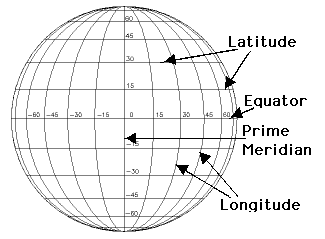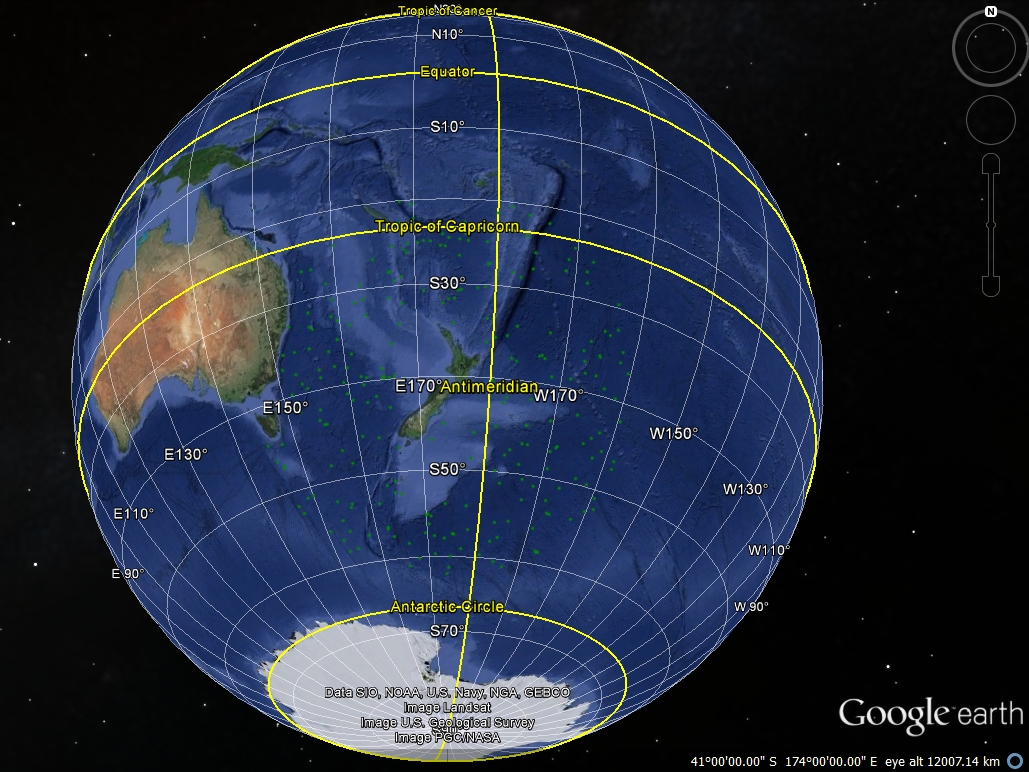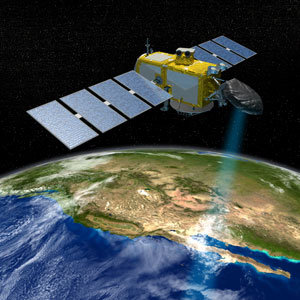You can contact LEARNZ, part of CORE Education, at:
Postal Address:
PO Box 13 678,
Christchurch 8141,
New Zealand
Imaginary lines around planet Earth are called latitude and longitude and help us locate positions on the Earth's surface.
Planet Earth is like a round ball. At the top of the ball is the north geographic pole and the bottom has the south geographic pole.
Around the middle of the ball is an imaginary line called the equator.
To make it easier to describe one location on the surface of the earth, imaginary lines are drawn called latitude and longitude.
Latitude lines go around the earth parallel to the equator. All lines of latitude are parallel to each other. They are given numbers from 0 to 90. The equator is 0°. The line half way to the South Pole is 45°South. The line half way to the North Pole is 45°North. The South Pole is 90°South. The North Pole is 90°North. The RV Tangaroa is sailing to 36°South on this voyage.
Longitude lines all pass through the South and North poles. They are not parallel to each other. The longitude line that passes through a town called Greenwich in England is given the number 0°. The RV Tangaroa is sailing to 177°West on this voyage.
Latitude and longitude are sometimes measured in degrees, minutes and seconds. They can also be measured in decimal degrees. Note that there are 60 minutes in a degree and 60 seconds in a minute.
Every point on the Earth can be defined by its latitude and longitude ‘coordinates’. You can use this website to find the coordinates of your location on earth, right now!
The RV Tangaroa is heading to the coordinates 177W36S. You can spot this location on this website's google map.
Who has heard of GPS? GPS Stands for Global Positioning System and is used all over the world. A GPS unit is a receiver that collects signals from satellites.
Global Positioning System satellites transmit signals to GPS receivers on the ground. Receivers require a clear view of the sky, so they are only used outdoors. They work well out on the open ocean.
Each GPS satellite has an atomic clock and sends a signal stating its location and the exact time. All GPS satellites transmit at the same instant. The signals move at the speed of light and arrive at a GPS receiver at slightly different times because some satellites are further away than others. The distance to the GPS satellites can be calculated by estimating the amount of time it takes for their signals to reach the receiver. When the receiver estimates the distance to at least four GPS satellites, it can calculate its position in latitude, longitude and height.

,Latitude and Longitude. Image source

,The application 'Google Earth' allows us to see where objects such as Argo Floats are located, in real-time.

NASA illustration of a JASON satellite. Image source
Next step learning: write a letter to Abel Janszoon Tasman who sailed to New Zealand in 1642 and explain three modern ideas or technologies that would have made his voyage easier.